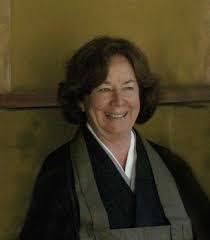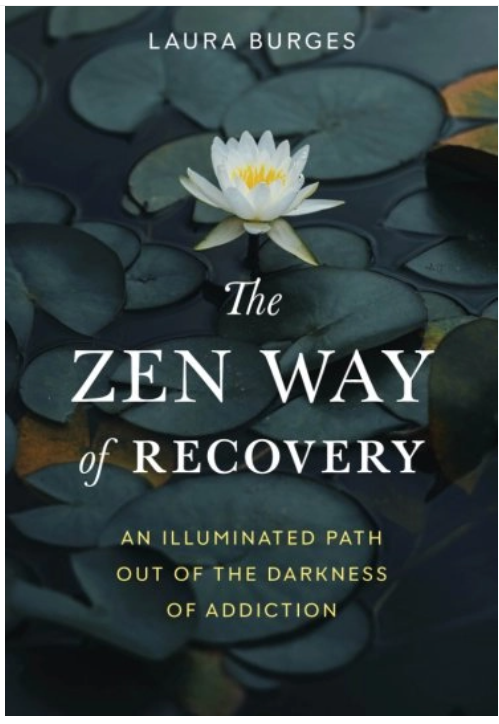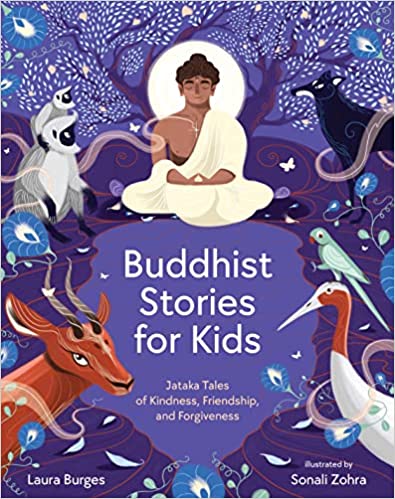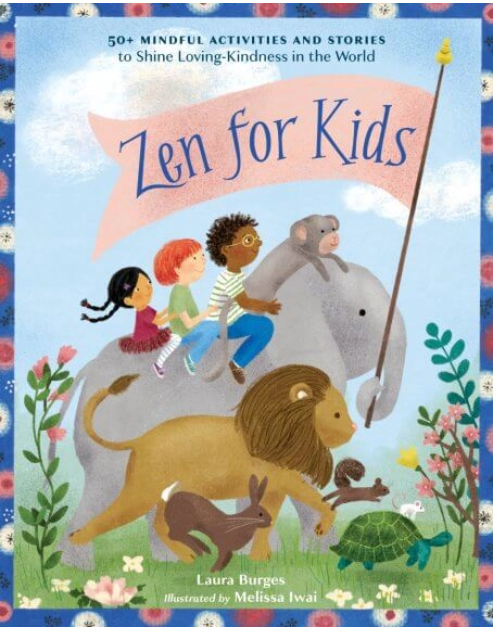|
 Ryuko
Laura Burges, a lay entrusted dharma teacher in the Soto Zen
tradition, lectures and leads retreats at different practice places in
Northern California. A teacher of children for 35 years, she now mentors
other teachers, helping to bring mindfulness practice into the elementary
classroom. Laura co-founded the Sangha in Recovery Program at the San
Francisco Zen Center and is the abiding teacher at Lenox House in Oakland. Ryuko
Laura Burges, a lay entrusted dharma teacher in the Soto Zen
tradition, lectures and leads retreats at different practice places in
Northern California. A teacher of children for 35 years, she now mentors
other teachers, helping to bring mindfulness practice into the elementary
classroom. Laura co-founded the Sangha in Recovery Program at the San
Francisco Zen Center and is the abiding teacher at Lenox House in Oakland.
Cuke Podcast with Laura 🔊 on Wisdom Stories of Tibet - April 12, 2025
Cuke Podcast with Laura 🔊 focusing on The Zen Way of
Recovery - July 2, 2023
Cuke Podcast with Laura 🔊
focusing on Buddhist Stories for Kids - Dec. 18, 2022
 Wisdom Stories of Tibet: Tales of Magic, Adventure, and Bravery, 2025 Wisdom Stories of Tibet: Tales of Magic, Adventure, and Bravery, 2025
Shambhala link
Amazon link
 The
Zen Way of Recovery: an Illuminated Path our of the Darkness of
Addiction The
Zen Way of Recovery: an Illuminated Path our of the Darkness of
Addiction
available July 18, 2023
Shambhala link
Amazon link
Her book
Buddhist Stories for Kids: Jataka Tales of Kindness, Friendship, and Forgiveness was published by Shambhala (at Amazon).
(Shambhala)
- from the
SFZC.org page for Laura

Laura on Jack Novcich -
Memories of
Old Jack
Laura
on Jack Weller
Laura on Jokan Zenshin Thomas (Tim) Buckley:
Zen Way, Yurok Way
-
at SFZC.org
audio - Laura on
the importance of humor in Zen practice - dharma talk at
SFZC
From the Shunryu Suzuki 100th Birthday Bash
report - Next Laura Burges sang (with good voice on key)
two songs topically appropriate for the occasion: Waking Up is Hard to Do (of
course to the tune of Breaking up is Hard to Do) and a very cool old cowboy poem
explaining reincarnation (I'd just the week before heard it recited at Tassajara
by a visiting musician-dc). It starts with a cowboy dying, being buried, a horse
eating what grows above his grave, the reciter observing the horse's manure and
remarking to his deceased friend, "you ain't changed that much."
 Zen
for Kids: 50+ Mindful Activities and Stories to Shine Loving-Kindness in the
World. Zen
for Kids: 50+ Mindful Activities and Stories to Shine Loving-Kindness in the
World.
Shambhala link
Amazon link
Applecrisp
by Laura Burges
from the Wind Bell, Vol.24-1 -
1990
I'm teaching third grade at the San Francisco School. On occasional Saturday
mornings, I go over to Cal to participate in the Bay Area Writer's Project, a
series of classes to help me learn how to help kids learn to write.
Recently, in such a class, we were asked to describe how to make a dessert and
this is what came to mind: I learned how to make apple crisp one winter when I
was living in a Zen monastery in the Los Padres Wilderness.
We lived in a very simple way up there with simple food that was served Japanese
style in the meditation hall. In winter, the cold outside was paralyzing and it
was only slightly warmer in the zendo.
But every five days, we'd set the tables in the dining room with red table
cloths, light the kerosene lamps, and sit down to what seemed to us, given our
usual fare, a feast.
Silent much of the day (to continue our meditation) we were hungry for talk and
the clinking of dishes and silverware, the rattle of conversation, filtered out
of the dining room like the babble of the rumbling winter creek.
I worked in the kitchen that winter and we worked-mostly-in silence. I learned
how to press a special tool through the core of the crisp green apples, which
would simultaneously core and slice them. We would toss the apple slices with
our hands in a huge stainless steel bowl, with fresh squeezed lemon juice and
tumble them into long pans. We'd pile on the topping-a concoction of rolled
oats, flour, brown sugar, nutmeg, cinnamon and butter, lightly mixed, press it
gently over the bed of gleaming apples, and slide the pans into the oven.
We'd serve it hot with cold whipped cream, carried over to the dining room from
the kitchen through the chill night air to the boisterous monks. The crispy
sweet topping, the warm, soft, spicy apples, the cold whipped cream delicious
and surprising.
I don't suppose food has ever tasted so good to mebefore or sinces it a did in
that mountain wilderness against a background of bird song, rain, creek chatter.
The sharp pleasure of delicious food in that simple, silent way of life.
|
 Ryuko
Laura Burges, a lay entrusted dharma teacher in the Soto Zen
tradition, lectures and leads retreats at different practice places in
Northern California. A teacher of children for 35 years, she now mentors
other teachers, helping to bring mindfulness practice into the elementary
classroom. Laura co-founded the Sangha in Recovery Program at the San
Francisco Zen Center and is the abiding teacher at Lenox House in Oakland.
Ryuko
Laura Burges, a lay entrusted dharma teacher in the Soto Zen
tradition, lectures and leads retreats at different practice places in
Northern California. A teacher of children for 35 years, she now mentors
other teachers, helping to bring mindfulness practice into the elementary
classroom. Laura co-founded the Sangha in Recovery Program at the San
Francisco Zen Center and is the abiding teacher at Lenox House in Oakland. Wisdom Stories of Tibet: Tales of Magic, Adventure, and Bravery, 2025
Wisdom Stories of Tibet: Tales of Magic, Adventure, and Bravery, 2025 The
Zen Way of Recovery: an Illuminated Path our of the Darkness of
Addiction
The
Zen Way of Recovery: an Illuminated Path our of the Darkness of
Addiction
 Zen
for Kids: 50+ Mindful Activities and Stories to Shine Loving-Kindness in the
World.
Zen
for Kids: 50+ Mindful Activities and Stories to Shine Loving-Kindness in the
World.